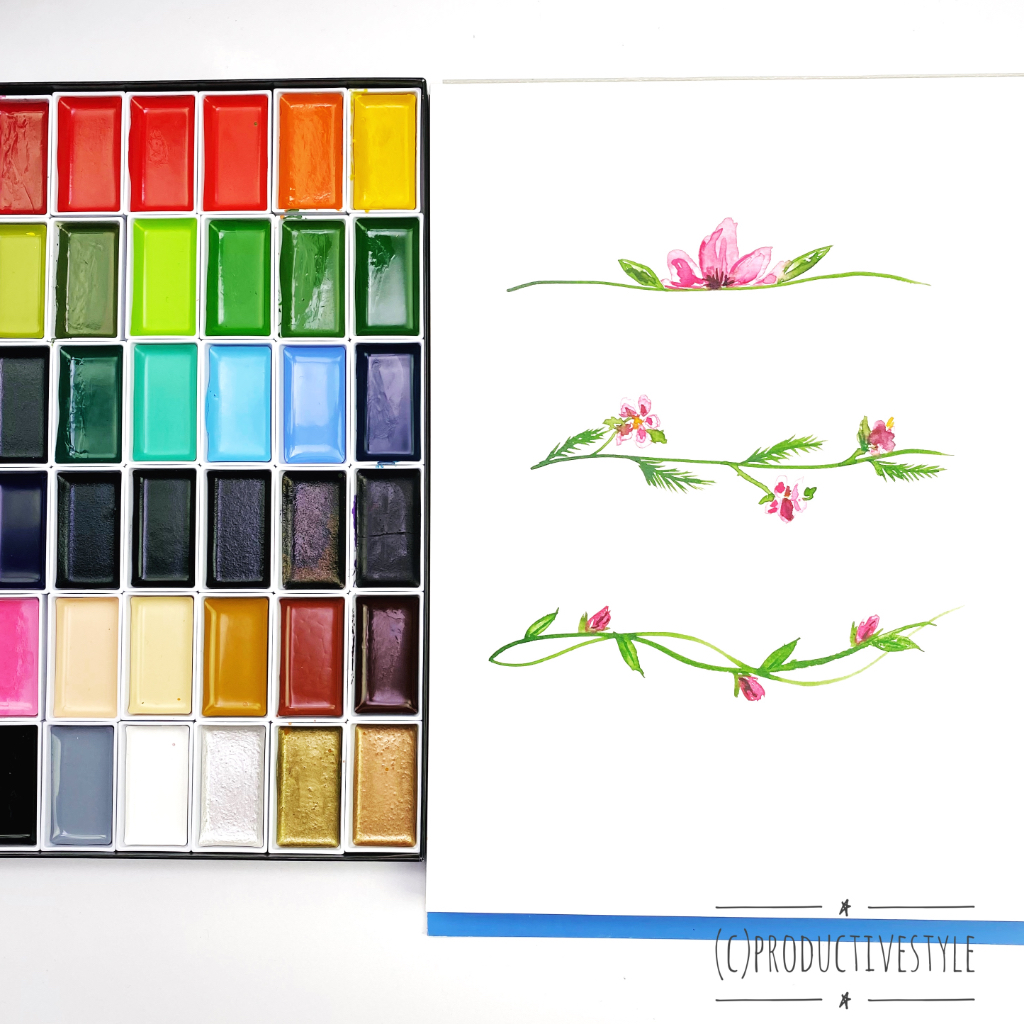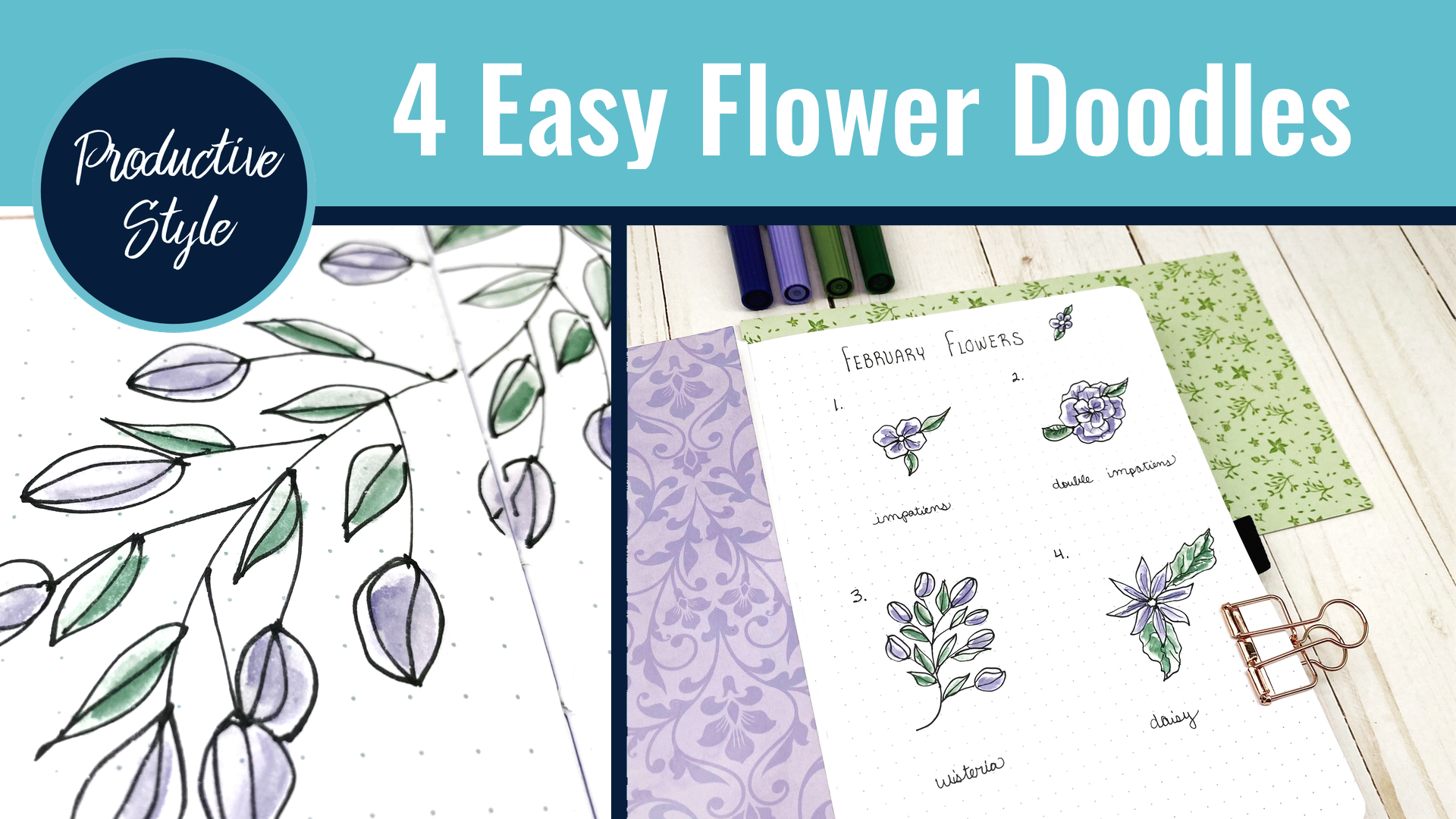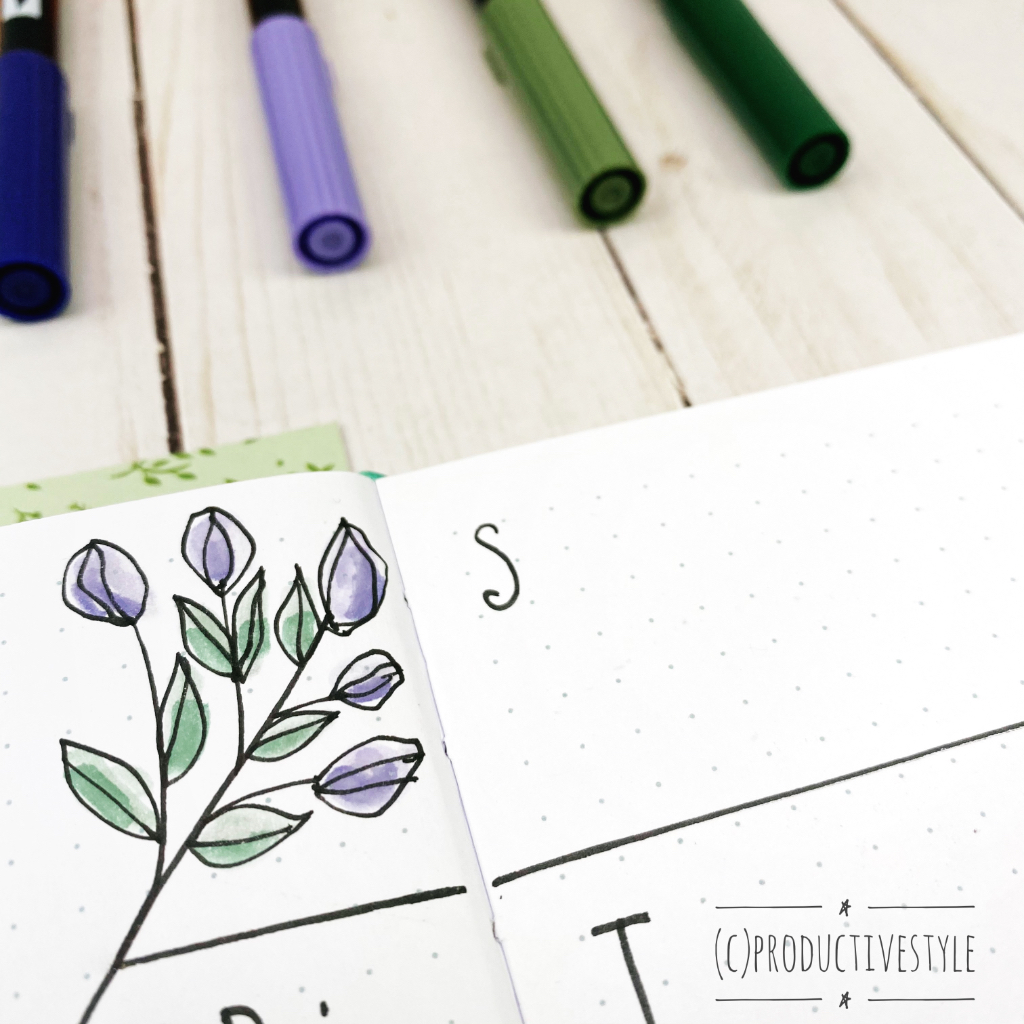This month I’ve been working on a lot more watercolor designs to use in bullet journals, and have also been experimenting with Gansai paints versus traditional watercolors. I thought it might be helpful to share some differences between types of watercolor paint to help you get started if you want to paint along with me!
There are three types of watercolor paints I’ll be talking about today: 1) traditional Western watercolor, 2) Gouache, and 3) Gansai.
Western Watercolor
Western watercolor paints are the dry cake form watercolors that you may have played with when you were younger. They come in a variety of quality levels and each has a different depth of color. These use a gum arabic base and blend well with each other. Typically watercolors are used in layers, and you can achieve more rich shades by layering wet paint over dry. Here are some sets you may want to try if you want to get started with traditional watercolor:
Starter Set:

High Quality Set:

Gouache
Gouache is a thicker variety of watercolor and comes in tubes rather than cakes. It can be used with less water to achieve more opaque coloring or can be watered down to use as a more translucent finish on your paper. Gouache also dries much more quickly than Western watercolor, which means that layering can happen faster, but mistakes are more quickly made permanent.
Here’s a great starter set:

and a higher-quality set:

Gansai
Gansai, a traditional Japanese watercolor, uses a variety of different bases, that can make it have a thicker, gummier appearance than traditional watercolors. It applies and is used similarly, with drying time falling somewhere between traditional watercolor and gouache. Gansai colors for the most part are blendable, but sometimes do not blend as seamlessly as Western watercolor. Often the final product of a gansai painting will appear more glossy than other forms of watercolor. Here’s the set I’ve been using lately:


Brushes
Watercolor artists can use a variety of brushes. Camel or sable hair brushes are considered traditional for watercolor, but I also like using gold taklon or synthetic brushes. These give a clean edge and work well for blending. Here are a couple starter sets of brushes I’d recommend if you’re looking to build a brush collection.
Detail Brushes


Mixed Type Starter Brush Set

Paper
For watercolor painting, I’d recommend at least a 140 GSM paper weight. Here is the type I’ve been using lately. Below I’ve also linked a higher-quality version that is pricier, but better to use if you’re creating fine art prints.
Practice Paper


High Quality Paper

Other Supplies
If you’re working a lot in watercolor, you may also find it useful to leave parts of your paper blank. To do this, you can use a masking fluid. Just paint the masking fluid on first and allow it to dry.

I hope this post helps if you’re wanting to get started with watercolor painting! It is such a fun hobby. If you have other questions, leave a comment and I’ll do my best to help out. If you’re looking for a way to learn easy watercolor techniques, I’ll also be covering watercolor techniques in a few upcoming YouTube Videos, so if you’re getting started, be sure to subscribe so you don’t miss a video!
P.S. Please note that this page has affiliate links. At no cost to you, a small portion of any products you purchase from these links will help support this page. Thank you so much!








